How to properly prune a tangerine tree at home: step by step instructions
An exotic tangerine tree adapted to the home environment. In order for it to please with its appearance and bear fruit, it needs proper care. Particular attention is paid to tree pruning. This article will show you how to crop tangerine tree at home and what to do after the procedure.
The content of the article
Why cut indoor tangerine
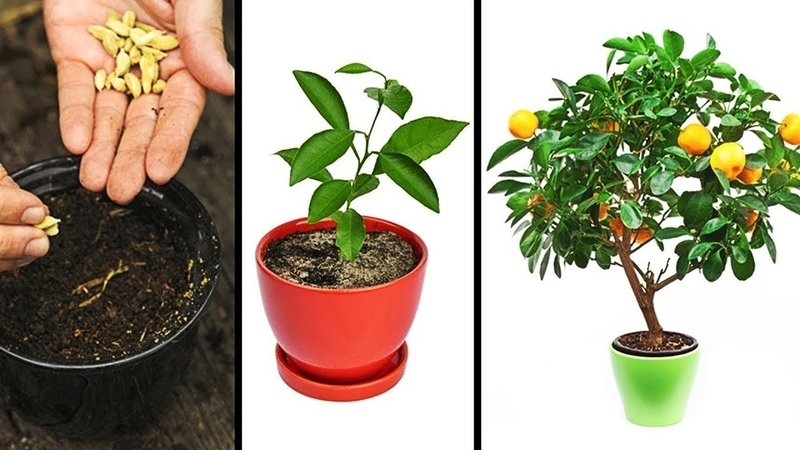
Pruning is an important procedure in the care of your home tangerine tree. Timely and competent deletion of branches allows:
- Set the size of the tree. The acceptable height of a homemade tangerine tree is 40-50 cm.
- Create a decorative crown that is compact and attractive.
- Protect the plant from disease. This is facilitated by the removal of dry and diseased branches and leaves.
- Improve fruiting. Pruning stimulates the formation of ovaries and subsequently the ripening of the fruit. Uncircumcised trees tend to bear little or no fruit with small, bitter fruits.
- Accelerate tree growth. Healthy branches gain strength, as they are not interfered with by weak and unviable ones.
Is it obligatory
Neglecting the pruning procedure not only leads to the neglected appearance of the plant, but also negatively affects its fruiting.
For growing a healthy and beautiful mandarin tree regularly removing and pruning branches is imperative.
Types of trim
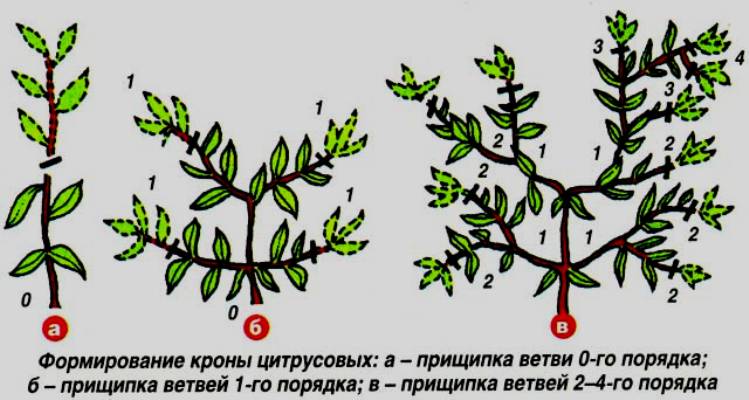
There are several types of trimming:
- Formative. Promotes the formation of the correct crown. Required primarily for a young plant. In an adult tangerine tree, using this procedure, the volume and shape of the crown is regulated. Formative pruning also speeds up the onset of flowering and fruiting.
- Sanitary. Aimed at keeping the plant healthy by removing damaged and dried branches. Affected branches or those with signs of disease are pruned to prevent the spread of disease.
- Anti-aging. It is used to renew an old plant that has lost the ability to grow and bear fruit. Signs of the need for anti-aging pruning are poor growth, poor flowering and fruiting. Rejuvenation is carried out by strong shortening of old branches, which leads to increased growth of young shoots, from which a new crown will form.
- Revitalizing. The purpose of this type of pruning is to restore a neglected crown and return the ability to bear fruit. Required for tangerine trees, the crown of which is either not formed, or is formed incorrectly, or has lost its shape. Also, this type of pruning is necessary for damaged trees.
Timing of pruning
Any time of the year is suitable for pruning a tangerine tree. It is required only during the period of active growth:
- during the formation of a new plant, maximum branching and the appearance of branches of a higher order are expected;
- while maintaining the shape of the crown of an adult plant, elongated and dry branches are removed.
The recommended period is from late February to early March. This is the time of active vegetation of the tangerine tree. In the spring, remove those branches on which there were fruits, as they begin to dry out. In cases of wilting, the procedure is carried out in the fall, preferably in October.When pruning in the fall, the plant needs additional artificial lighting.
Pruning is carried out either before flowering, or after the tree has faded.
Important! Pruning of freshly transplanted mandarin trees is not recommended. Better to wait 3-4 weeks.
When to cut indoor tangerine for the first time
The first pruning of a tangerine tree is done on a young plant when it reaches an average of 30 cm.
During this period, the first leaves begin to appear on the tree. Pinch each branch after the formation of four leaves on it.
What does that require
Pruning requires tools such as garden shears (pruning shears) or a grafting knife.
Before the procedure, the instruments are disinfected with a solution of potassium permanganate and check that they are sharp.
You will also need a tool for processing the cut site - garden pitch, wood resin or paint based on natural linseed oil.
Instructions for pruning mandarin at home
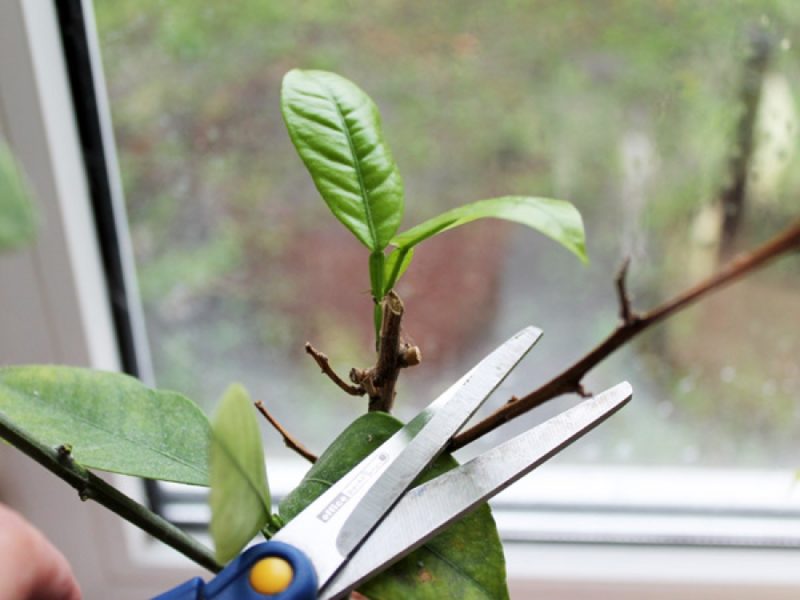
After the first pinching, you should observe the growth and development of the tangerine tree and, as it branches, perform formative pruning. Also prune unnecessary branches in a timely and correct manner.
What branches and how to delete
Subject to removal:
- small, thin shoots that interfere with the full formation of side branches;
- powerful shoots growing from the root and taking a significant amount of nutrition and strength;
- thickening branches growing vertically and to the sides or directed inward of the crown - they deprive the plant of an attractive appearance;
- overgrown, elongated branches, giving the plant a neglected look.
Deleting branches is done in steps:
- Carefully cut the branch or part of it above the bud.
- The cut site is treated with garden varnish or tree resin and covered with a film.
- During the tightening of the wound (about 3-4 weeks), the plant is not touched. After the film is removed.
- After a month, new shoots are examined, leaving strong ones and removing weak ones.
For even development of trees, early and extra buds are cut off. In large quantities, they take away useful substances from the plant and slow down its growth.
Important! Calculation of buds and leaves: for each future fruit there must be at least 10 leaves.
How to form a tree
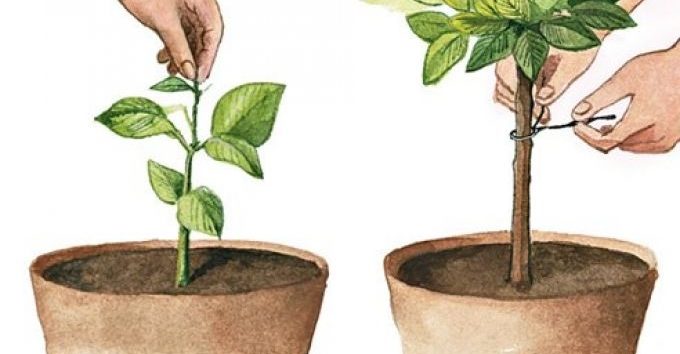
The tangerine tree is formed as a short bush that forms a beautiful, spreading crown. It is recommended to make it spherical and evenly developed, leaving the length of the main stem up to 20-25 cm.
Attention! The crown is formed in the first 2-3 years of growth. Thereafter, circumcision is performed less frequently.
Formative pruning consists of the following steps:
- In a young plant, which is a single shoot, the crown of the stem is shortened. It is of no decorative value and does not bear fruit. The top is cut so that there are 5-6 developed buds under the cut, from which branches of the first order will grow.
- Of the branches of the first order, 3-4 strong, symmetrical shoots are left, directed in different directions. After regrowth, they are also cut off, leaving 4-5 buds on each branch.
- On the side branches, branches of the second and third order are formed, they are also cut off.
- Leave branches of the fourth order, growing in a horizontal direction. Flowers are formed on these shoots and subsequently - fruits.
This completes the formation of the base of the tangerine tree.
Attention! The formation of a tangerine tree must be carried out before the first flowering. Flowering before the appearance of branches of the fifth order leads to the termination of the growing season of the plant.
Post-procedure care
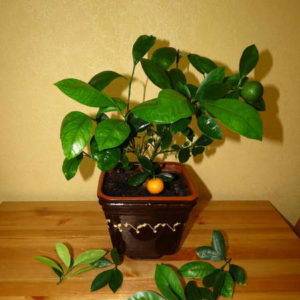
In order for the tangerine tree to recover faster, after pruning, it needs full and competent care:
- Provide enough light. Daylight hours - at least 12 hours. In autumn, the lack of sun is compensated for with special garden lamps.
- Water the tree thoroughly 2-3 days after removing the branches. Sprinkling with warm water from a spray is preferred.
- The tree is fed 7 days after the procedure, using complex fertilizers for citrus fruits.
- For uniform development of the crown, the tangerine tree is periodically rotated around its axis.
- In winter - a dormant period - they are placed in a cool place (for example, on a balcony) with a temperature in the range of + 12 ... + 16 ° C and a humidity of about 60%. Watering is carried out 2 times a week, feeding is not required.
If the procedure was radical, the leaves on the tree may be missing for a long time. Therefore, it is recommended to cut branches one by one without removing all the shoots at once.
How to pinch a tangerine
Nuances of pinching a tangerine tree:
- Pinching the top of a young plant is the first procedure carried out to form its crown.
- Pinching is done by removing the top of the branch.
- If the upper shoot is formed from the replacement bud, and not the lateral branches, the pinching is repeated.
- The procedure was successful if a young growth appeared on the trunk.
Pinching promotes the growth of lateral branches, the formation of the correct structure and direction of the shoots.
It is interesting:
What is the difference between clementines and tangerines and which is healthier.
How to use tangerine peels for maximum benefit.
Health benefits and harms of tangerines, energy value and rules of use.
Conclusion
Pruning and pinching a tangerine tree are essential procedures to promote healthy and productive plant growth. It is important to carry out them correctly and in a timely manner, and then provide high-quality care for the quick restoration of the tree.